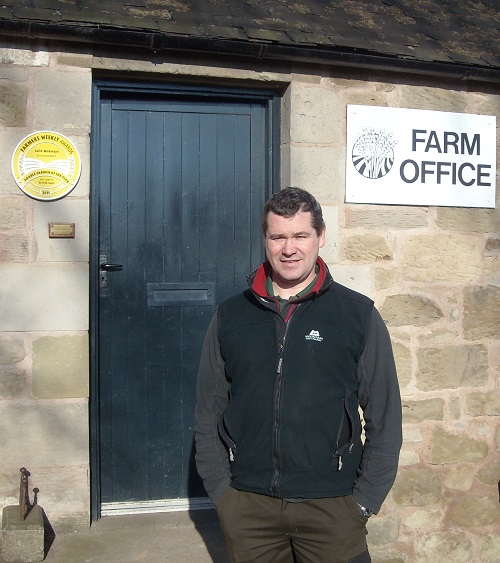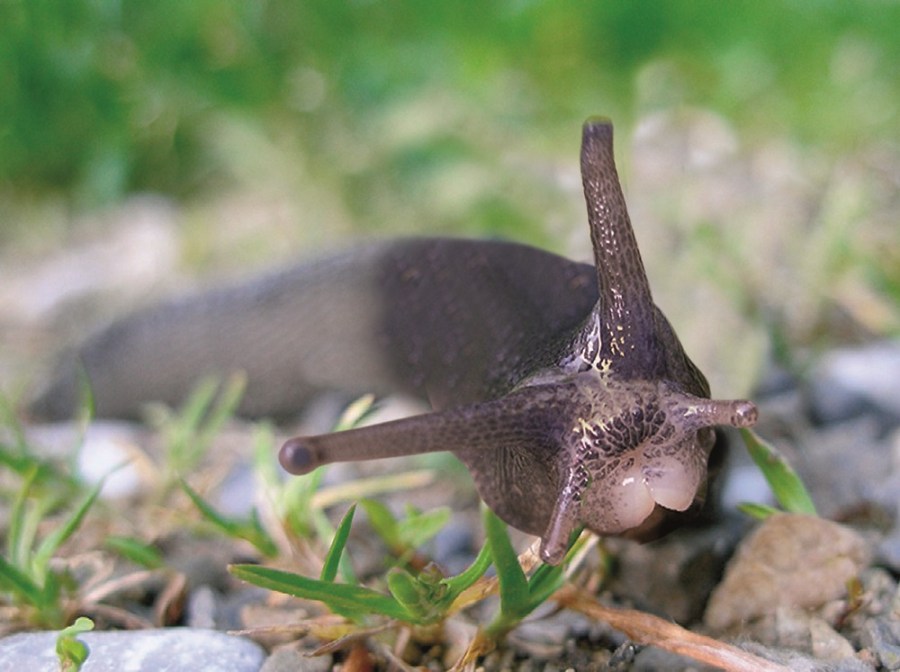Metaldehyde users are faced with a 10m buffer zone requirement on all fields this autumn. CPM finds out how growers can protect their field margins.
Ferric phosphate performed just as well as metaldehyde.
By Lucy de la Pasture
For the past nine years, the mainstay for slug control, metaldehyde, has been under the limelight because of drinking water quality issues, but now its future seems to be dependent on something else entirely – and it’s all linked to ‘stewardship’.

David Fuller uses Deter to manage problems with grain hollowing.
The Metaldehyde Stewardship Group (MSG) has launched an enhanced campaign for 2017 that has a focus on the wider environment, in particular birds and small mammals, as well as its continued emphasis on water.
“Water stewardship remains vital and is still very much at the heart of the campaign, but an issue that’s distinct from water quality is that metaldehyde products are undergoing re-registration,“ explains MSG spokesperson, Simon McMunn. As part of this process, the regulatory risk assessment has revealed a requirement for increased protection of birds and small mammals.
Closely monitored
“Because of this, stewardship is now a CRD-agreed condition of metaldehyde product availability and regulators will be monitoring the campaign success closely. This means it’s more important than ever for the industry to pull together and follow stewardship advice, to help preserve the future of the active ingredient which remains a key tool in slug control.”
The end result is a new guideline for 2017 that no pellets should be allowed to fall within a minimum of 10m of any field boundary or watercourse.
″The buffer was previously 6m and only applied to watercourses. Increasing this to 10m on all field boundaries will help protect birds and small mammals, as well as provide additional protection to water,” he explains.
The updated guidelines also recommend an Intergrated Pest Management (IPM) programme for slug control, where slug pellet usage forms just a part of the whole approach to slug control, adds Simon McMunn.
As part of an IPM strategy growers could consider supporting pellets using seed treatments, which can be used up to the field boundary, suggests David Cairns, agrochemical director at McCreath, Simpson & Prentice.
“Seed treatments won’t give full protection against slug damage. But if you use them as part of an integrated strategy, they give you a reduction in grain hollowing and can reduce the need to apply slug pellets. As part of a grower’s toolkit, that’s invaluable,” he says.
Slugs prove to be a serious issue for David Cairns’ growers in Northumberland, both above and below ground.
“As we don’t have blackgrass issues here, we tend to drill earlier – but this means that slug pressure can be quite high. Deter (clothiadin) is used by a lot of our growers as a slug deterrent alongside pellets, and it’s an effective part of the strategy.”
Grower David Fuller encounters similar problems at McGregor Farms in the Scottish Borders, and agrees with David Cairns that seed treatments can ensure that crops in the margins are not left vulnerable.
“Our geography means we also tend to get damper summers, which can make slugs quite an issue for us. If you only use metaldehyde slug pellets, they can’t cover the boundaries, so they’re not a complete solution. You need seed treatments as well,” he comments.
Grain hollowing is the most serious damage that slugs can do and this is particularly crucial for him.
“Using Deter gives us cover and lets the crop get through the ground without suffering from grain hollowing,” he adds.
“The support that seed treatments can provide in fending off slugs has sometimes been overlooked,” notes Matthew Garnett, commercial technical manager at Bayer. “But growers who are utilising these products effectively, particularly in areas where pressure can be extremely high, are finding that they complement slug pellets very well.”
Part of using seed treatment includes maintaining good stewardship practices, just as with slug pellets, he highlights. “Keeping seed treatments is so important in ensuring the best possible slug control, so all of us in the industry have got to ensure we keep up the high levels of stewardship.”
Alongside seed treatment and slug pellets, Matthew Garnett also says that there are other things that growers can do to protect against slugs as part of an integrated management programme.
“Cultural control methods, such as rolling post-drilling to ensure a fine seedbed, reduces slug activity as it gives them nowhere to hide, while reducing surface trash gives them less to feed on. In addition, matching drilling depth to seedbed conditions is an important strategy to minimize slug damage. In the event of a cloddy seedbed, if seeds are drilled to a greater depth (over 4cm, compared to 3cm in a fine seedbed) this will help prevent slugs from reaching the seed.”
Another alternative to using metaldehyde is ferric phosphate, which has been demonstrated to have significant and wide-ranging benefits in trials carried out over the last two years by Dr Andy Evans of the SRUC Crop and Soil Systems Research Group.
Potato trials
Using funding from AHDB, the trials took place in the potato crop, where slug damage can’t be tolerated. Using the slug-susceptible variety Maris Piper, the trials were carried out at two sites in Mid-Lothian and Fife, with a separate set further south in Lincs. The aim of the trials was to assess the ability of ferric phosphate to control slugs in the crop, thereby reducing damage and preserving quality, at a level where growers could be confident of its performance and efficacy.
“We conducted the trials over three separate treatments to the crop, at three identifiable timings. The first application is crucial. This needs to be before the canopy closes over between the rows to enable good ground coverage of pellets to be achieved.
“The second application needs to be after a rain or irrigation event, when the slugs come to the surface and activity increases. The third treatment timing is post-desiccation, to protect the tubers from ongoing slug risk prior to lifting,” he explains.
Two types of slug pellets were used in the trial, 4% metaldehyde (TDS Major) and 3% ferric phosphate. Different combinations of product were looked at to compare efficacy with persistence.
“In most situations, ferric phosphate performed just as well as metaldehyde. The similar levels of control afforded by both products means that the two were interchangeable. We noticed under wet conditions, the premium brand ferric phosphate degraded slightly quicker than the premium brand metaldehyde, but because of their overall similarity in performance that could be managed by selecting the active ingredient according to weather conditions or irrigation applications.”
Andy Evans also reports that with a total metaldehyde dose of 700g a.s/ha allowable in one calendar year, growers wishing to follow the potato crop with winter wheat in the autumn, could easily afford to substitute one application of 210g a.s/ha metaldehyde in the potato crop for ferric phosphate with confidence, meaning that part of the yearly metaldehyde dose could usefully be reserved for establishing the wheat crop.
“We demonstrated that ferric phosphate is a very useful product. With similar levels of efficacy to metaldehyde, the two products complement each other perfectly. Headland management is made far easier as ferric phosphate can be used as a separate product on field margins or growers can use it as an overall treatment,” he explains.
“With metaldehyde likely to continue to be scrutinised, using ferric phosphate as an integrated part of slug management should become the norm and be widely adopted where environmental and stewardship issues remain challenging.”




